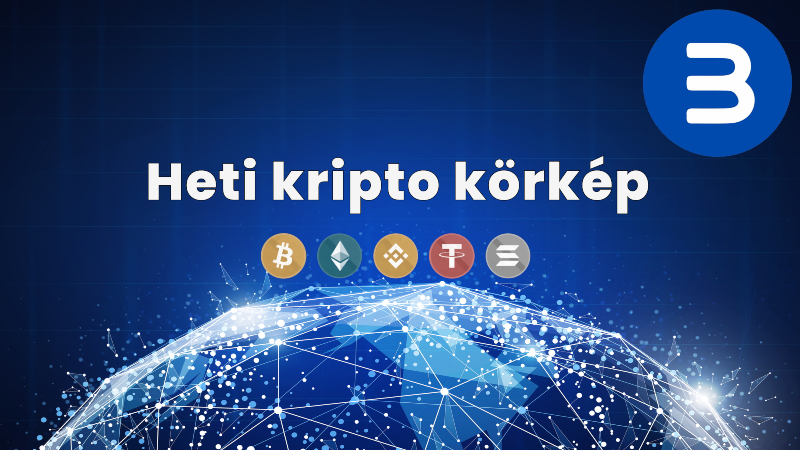Bitcoin vs Ethereum – Bitcoin South Africa
Bitcoin vs Ethereum: 14 Plain‑English issues
Bitcoin aims to be hard, neutral money with simple, fixed rules anyone can verify. Ethereum is a flexible app platform that changes more often and leans on social coordination. If your goal is savings, Bitcoin’s boring predictability is a feature, not a bug.
1) The Big Early Stash (aka “premine”)
Plain English: At launch, about 72 million ETH already existed – roughly 60M came from a public crowdsale and around 12M went to the foundation and early contributors. These coins were minted at the starting line, not earned by open mining after launch.
Why Bitcoiners care: Early concentration tends to lock in influence. Bitcoin had no premine – every coin began as a block reward anyone could mine.
More detail:
- What the premine was – a large pre-allocation minted in the genesis block, split between sale buyers and insiders.
- Why 70 percent is argued – as total supply grew past 120M, the launch allocation became a smaller percentage, but a majority of coins in the early years traced to that premine. The exact percentage depends on the date you measure, which fuels debates.
- Governance effects – large, known treasuries and early holders can steer funding, research priorities and social consensus. Even if they act in good faith, the structure privileges them.
- Market effects – big early bags compound influence in staking and in protocol politics because those holders can fund or veto ideas more easily.
TL;DR: A head start at launch shapes power for a long time.
Ask yourself:
- If money should be neutral, should insiders start with a huge lead?
- Would you prefer a system where nobody gets coins before day one mining?
2) Rewriting History After a Disaster (the 2016 DAO rollback)
Plain English: A major bug drained funds from a big project called The DAO. Ethereum changed the ledger to move coins back, splitting the community into ETH with the edit and ETC without it.
Why Bitcoiners care: Money history should be final. If it can be edited once under pressure, it can be edited again.
More detail:
- What actually changed – an irregular state change redirected the hacked coins to a recovery address at a specific block height.
- How the decision happened – public calls, community debate and client releases. Node operators who upgraded followed the edited chain, those who did not became Ethereum Classic.
- Precedent – the social layer overruled strict immutability for a high profile loss event. That signals that under extreme stress, social coordination can trump the ledger.
- Practical effect – two chains emerged, showing users ultimately choose by running code, but also showing that strong actors can coordinate a rewrite when incentives align.
TL;DR: Do-overs weaken long term certainty.
Ask yourself:
- Would you keep savings in a ledger that can be edited by social consensus?
- What would stop another edit if the stakes were high enough?
3) Changing the Money Rules (no fixed cap)
Plain English: Ethereum updates how many coins are created and how fees are handled. Sometimes supply grows, sometimes fees are burned which can shrink supply during heavy use.
Why Bitcoiners care: Savers want predictable rules that do not move with new priorities or committees. Bitcoin has a fixed 21M cap and a known schedule.
More detail:
- PoW era – block rewards were reduced more than once to manage issuance.
- Fee burn – EIP 1559 burns the base fee in each transaction, introducing a variable burn that depends on network use.
- Merge to PoS – removing miners cut new issuance and shifted security costs to stakers.
- Withdrawals and future changes – enabling withdrawals changed staking dynamics, and new upgrades can change incentives again. The policy is adjustable by design.
TL;DR: Flexible policy is useful for apps, not ideal for predictable savings.
Ask yourself:
- Do you want long term savings tied to rules that can change?
- If the rules changed against you, what could you do besides accept it or sell?
4) Harder to Count the Total Coins (supply audit)
Plain English: ETH exists on two layers – the execution layer and the staking layer. Some ETH is burned, some moves between layers. You can count it, but it is technical.
Why Bitcoiners care: If most people must trust dashboards to know the supply, verification turns into trust.
More detail:
- Formula – supply equals execution balances plus consensus balances minus deposits, plus withdrawals, minus total burns.
- History complications – during mining, uncle or ommer rewards added variability that has to be accounted for in a full audit.
- Practical cost – replicating the count yourself typically requires an archival or well indexed node and many hours of processing. Most users rely on third party sites.
- Error surface – differences in methodology across explorers create small discrepancies that undermine confidence for non experts.
TL;DR: More moving parts means more reliance on experts.
Ask yourself:
- Can you verify ETH supply at home without trusting a website?
- Which money will your future self prefer – the one you can check yourself or the one you must look up?
5) Staking Rewards Favor Big Holders
Plain English: Everyone may earn a similar percentage return, but bigger piles earn more coins in absolute terms and compound faster. Large operators also have efficiency advantages.
Why Bitcoiners care: Over time, whales gain influence simply by already being whales, tying wealth and network power together.
More detail:
- Mechanics – validators post stake in 32 ETH chunks and get rewards for proposing and attesting to blocks. Bigger operators run many validators and smooth variance.
- Compounding – auto compounding or periodic restaking makes large holdings scale faster than small ones.
- Penalties – inactivity or slash events hit smaller solo stakers harder in percentage terms if they cannot manage uptime as well as professional operators.
- Liquidity – liquid staking derivatives let big players stay capital efficient, reinforcing the scale advantage.
TL;DR: Same percentage is not the same outcome.
Ask yourself:
- Are you comfortable with the richest participants gaining influence fastest?
- Would you rather separate money ownership from consensus power like Bitcoin does with proof of work?
6) A Few Staking Services Got Huge (convenience centralization)
Plain English: Many people choose one click staking services. A handful of providers now control a large share of validation.
Why Bitcoiners care: Big chokepoints are easy to pressure. Voluntary self limits are not the same as protocol guarantees.
More detail:
- Why they grew – easy onboarding, pooled operations, and liquid staking tokens that can be traded or used as collateral.
- Chokepoint risk – a few operators can coordinate on policy, suffer correlated outages or face regulatory pressure that affects many users at once.
- Governance – some providers have governance tokens and treasuries that can align to protect their market share.
- Mitigations under discussion – distributed validator tech and self imposed caps are steps, but they rely on policy, not on protocol enforcement.
TL;DR: Convenience centralizes and creates pressure points.
Ask yourself:
- If a regulator leans on a few providers, what happens to your transactions?
- Do you prefer money that resists chokepoints by design rather than by promises?
7) Most Nodes Run the Same Software (client monoculture)
Plain English: There are several programs to run Ethereum, but in practice one execution client has dominated. If it has a bug, most of the network can follow the wrong rules.
Why Bitcoiners care: Real resilience needs diversity in practice, not just in theory.
More detail:
- Two layers – Ethereum has execution clients and consensus clients. Diversity is needed in both, but execution client dominance is especially risky.
- Supermajority bug risk – if the dominant client misbehaves, honest nodes may still follow it, forcing emergency coordination or rollbacks to recover.
- Operational inertia – large operators standardize on one stack to reduce complexity, which reinforces dominance over time.
TL;DR: One dominant codebase becomes a single point of failure.
Ask yourself:
- Would you board a plane if a single software bug could ground the entire fleet?
- Which money feels sturdier – one dependent on a dominant client, or one engineered to change slowly?
8) Middlemen Who Order Transactions (and can follow blacklists)
Plain English: Specialized builders and relays decide which transactions go into a block and in what order. Some follow blacklists.
Why Bitcoiners care: Extra layers introduce extra levers for censorship or favoritism.
More detail:
- What MEV is – profit from ordering and bundling transactions, including front running and sandwiching.
- MEV Boost path – validators outsource block construction to relays and builders to earn more, which moves power off chain.
- Policy pressure – some relays filter transactions tied to sanctioned tools to avoid risk, which is de facto censorship.
- Proposed fixes – inclusion lists and in protocol proposer builder separation may reduce reliance on relays, but these are still evolving.
TL;DR: More middlemen means more control points.
Ask yourself:
- Are you ok if a middleman can delay or exclude your transaction?
- Do you want censorship resistance as default, or as a future roadmap item?
9) Layer-2s With “Pause Buttons” (training wheels)
Plain English: Many rollups can still be paused or upgraded quickly by a small group for safety.
Why Bitcoiners care: While those keys exist, users are trusting people, not only code.
More detail:
- Admin keys – multisigs or councils can halt the system, upgrade contracts or change parameters with short notice.
- Exits – permissionless exits and fully live fraud or validity proofs are not universal yet, so users may be exposed during incidents.
- Sequencers – most rollups rely on centralized sequencers that can reorder or censor transactions and that can suffer downtime.
TL;DR: Trustless later is still trust today.
Ask yourself:
- If an admin pauses the system during volatility, where does that leave you?
- Would you prefer scaling that does not rely on emergency powers?
10) Running Your Own Node Is Heavy (state bloat)
Plain English: Fully verifying Ethereum can require significant storage, bandwidth and uptime. Many users default to third party servers.
Why Bitcoiners care: Depending on hosted providers re introduces trust and surveillance risk.
More detail:
- Resource profile – full and archival nodes can take hundreds of gigabytes to terabytes and require stable bandwidth and maintenance.
- Light options – pruned modes and light clients help but are not the mainstream default for sovereign verification.
- UX gravity – the easier path is to point wallets at commercial RPC endpoints, which centralizes traffic and creates data collection points.
TL;DR: Harder home verification pushes users to trust me servers.
Ask yourself:
- Could you realistically run and verify this on home hardware?
- Do you want savings that require outsourcing verification?
11) Company-Controlled Tokens Can Be Frozen (e.g., stablecoins)
Plain English: Major tokens like USDC have freeze and blacklist functions for compliance, and they are used in practice.
Why Bitcoiners care: If large assets can be halted by a company, a big part of the economy can be stopped on demand.
More detail:
- Contract design – issuers retain admin keys that can freeze addresses, reverse transfers or blocklists to meet legal demands.
- DeFi dependency – stablecoins are core collateral and settlement assets in many apps, so freezes ripple through positions and liquidity.
- Precedent – once freezing is normal, excluding categories of users or apps becomes easy under pressure.
TL;DR: Corporate switches weaken neutrality.
Ask yourself:
- How neutral is a platform if its biggest assets can be frozen instantly?
- Would you keep long term wealth in an ecosystem where companies can pull levers?
12) Re-Using Staked ETH for Extra Yield (restaking)
Plain English: Stakers can re pledge their ETH to secure extra services for more yield, but that adds new slashing risks. If those services fail, many validators can be punished together.
Why Bitcoiners care: This layers systemic risk onto the base money to chase yield.
More detail:
- AVS concept – additional services like oracles, data networks or bridges piggyback on the same stake and define extra rules.
- Correlation – one failure can slash many validators at once because the same stake is reused, creating chain reaction risk.
- Complexity creep – monitoring and risk management gets harder for stakers and users trying to assess safety.
TL;DR: Extra yield equals extra correlated risk.
Ask yourself:
- Are you being paid enough to accept chain reaction losses?
- Do you want your base money entangled with other projects failures?
13) Frequent, Meaningful Rule Changes
Plain English: Ethereum upgrades often change important economics or mechanics. Great for building, but it means the ground moves.
Why Bitcoiners care: Savers want rules that will not surprise them in 5, 10 or 20 years. Bitcoin changes slowly on purpose.
More detail:
- History – multiple named hard forks adjusted opcodes, gas costs and economic rules. London introduced fee burn, the Merge switched to PoS, withdrawals enabled staking exits, later upgrades target data availability and validator parameters.
- Culture – fast iteration is encouraged to improve UX and throughput. That is positive for developers but introduces uncertainty for savers who prefer ossified rules.
TL;DR: Fast iteration is great for apps, not for money.
Ask yourself:
- Do you want money that optimizes for shipping features or for long term stability?
- If your retirement plan depends on it, which philosophy would you trust?
14) Who Chose Proof-of-Stake?
Plain English: No single person. Researchers proposed it, developers shipped clients, operators adopted it. Dissenters continued on a minority proof of work fork.
Why Bitcoiners care: It shows that social coordination among experts and big players can change core rules.
More detail:
- Process – ideas move through proposals and public calls. When client teams converge, they release code with new parameters. The change becomes real when operators run that code.
- Trigger – the PoS switch was activated by hitting a preset difficulty target that told nodes to hand over to the new rules.
- Market vote – the economic majority followed the PoS chain. A minority stayed on PoW, proving the final arbiter is what users run.
TL;DR: The rulebook can shift when enough stakeholders align.
Ask yourself:
- Do you want your money rules to depend on ongoing social alignment?
- Or do you prefer a system that minimizes governance over the money itself?
The Bitcoin‑Maxi Takeaway
Bitcoin is built to be credible savings: a fixed 21M cap, simple rules, and verification you can do at home. Influence isn’t granted by coin ownership; it’s earned by spending real‑world resources (energy/hardware). Fewer levers, fewer committees, fewer chokepoints.














Post Comment